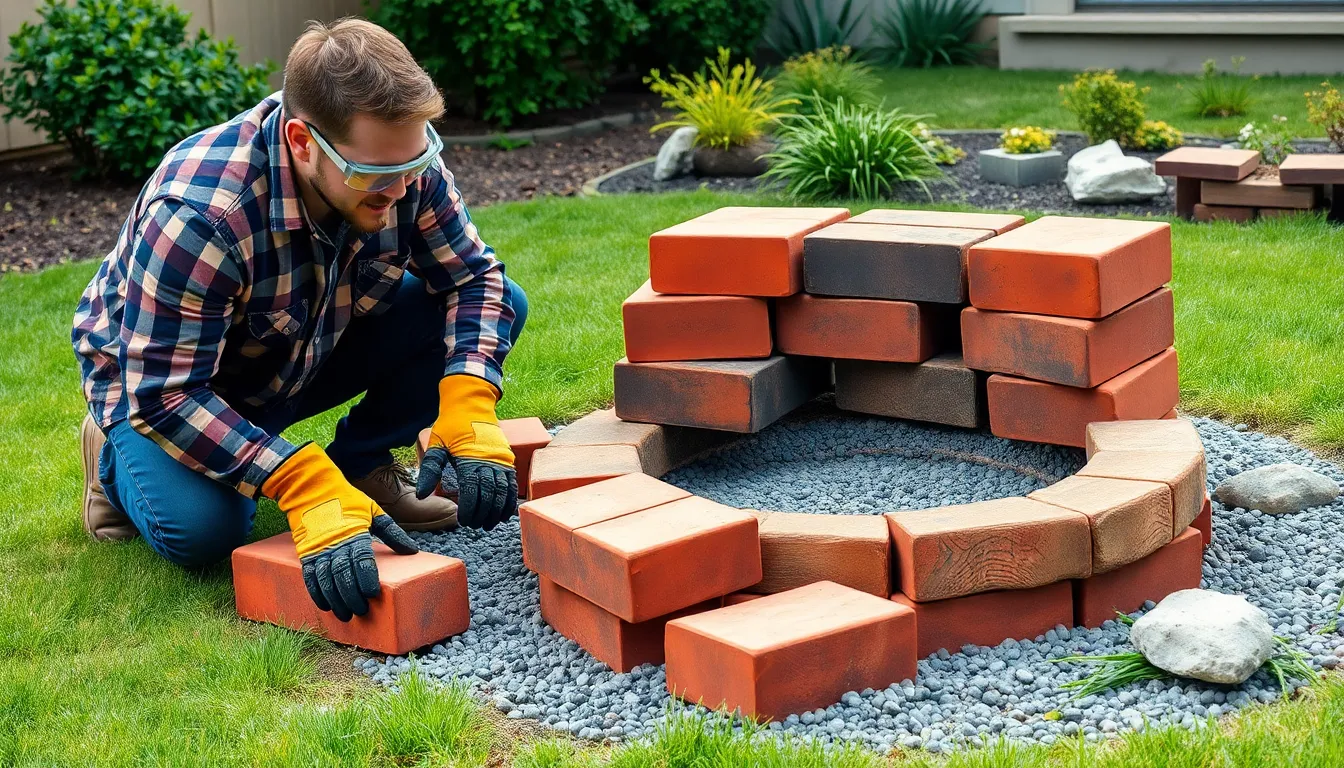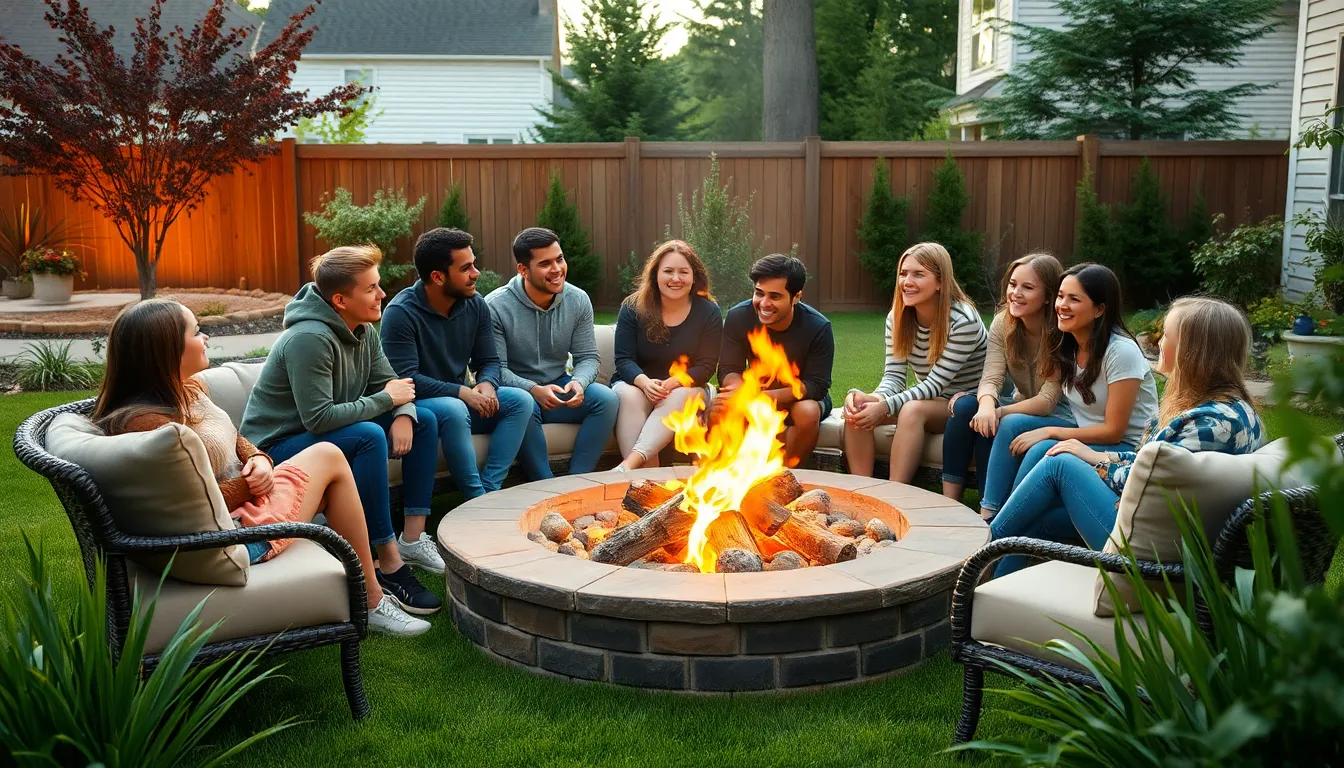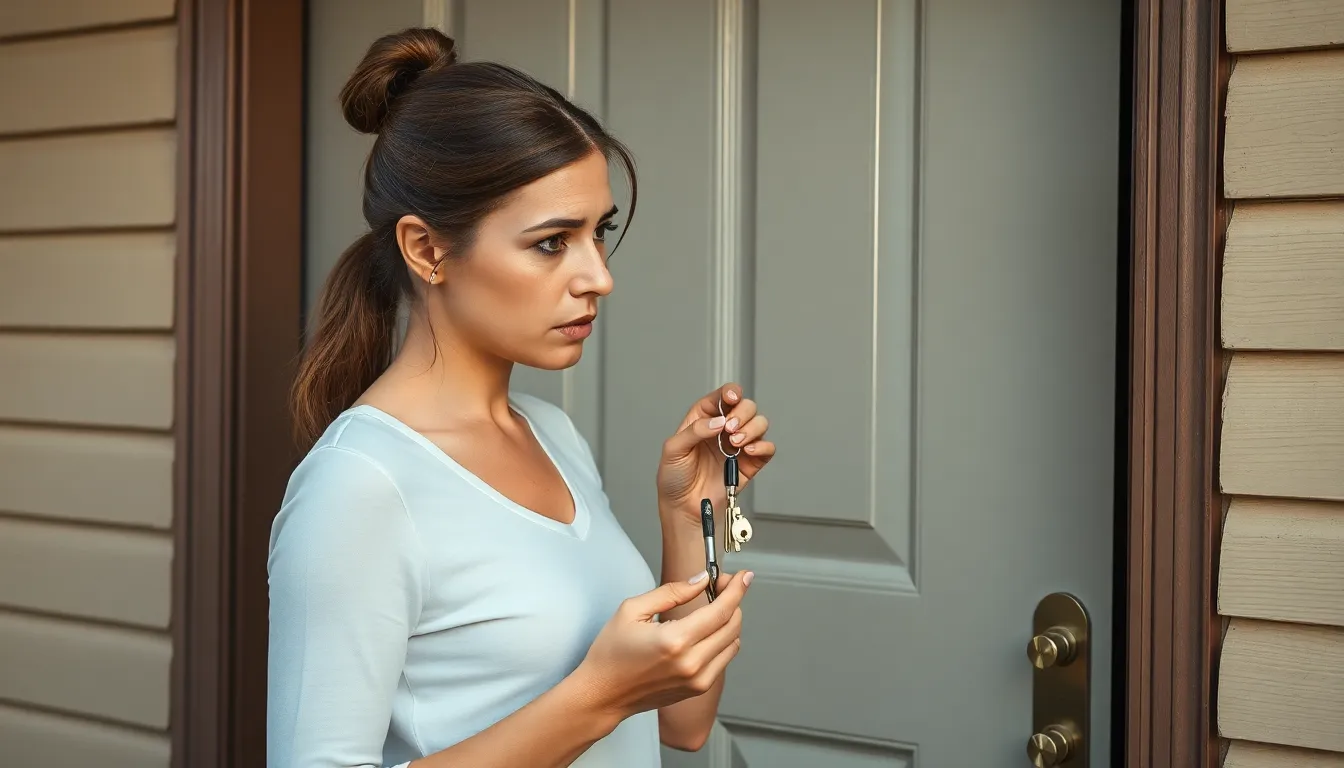Table of Contents
ToggleImagine a cozy evening under the stars, laughter echoing as friends gather around a crackling fire. A backyard fire pit isn’t just a source of warmth; it’s the ultimate gathering spot that turns ordinary nights into unforgettable memories. Whether it’s roasting marshmallows or sharing ghost stories, a fire pit adds that magical touch to any outdoor space.
Planning Your Backyard Fire Pit
Planning involves thoughtful consideration of the fire pit’s location, size, and style. Each element contributes to comfort and functionality.
Choosing the Right Location
Selecting the right spot for a fire pit is crucial. Avoid areas near overhanging branches or structures to reduce fire risks. Identify flat, stable ground to minimize safety hazards. Proximity to seating enhances the social experience, so place the fire pit close to outdoor furniture. Ensure the location complies with local regulations about fire safety and distance from property lines. Accessibility for firewood and materials also matters, making it easier to maintain the fire.
Determining the Size and Style
Size and style directly affect the fire pit’s functionality and aesthetic appeal. Consider how many people typically gather around it; a small pit suits intimate gatherings, while larger ones accommodate bigger groups. A fire pit’s depth ensures it safely contains flames and provides adequate heat. Choose materials that match the overall design of the backyard. Stone or brick offers a classic look while metal provides a modern touch. Finally, factor in how the fire pit fits within existing landscaping and outdoor features, creating a cohesive environment.
Necessary Materials and Tools

Building a backyard fire pit requires specific materials and tools. Gather these items to ensure a successful project.
Essential Supplies
Firebrick provides durability and heat resistance. Gravel serves as a stable base, enhancing drainage. Sand can act as a filler between bricks. A steel fire ring acts as a protective barrier. Fire-resistant mortar secures bricks and withstands high temperatures. Lastly, decorative stones add style, creating a finished look.
Tools You’ll Need
A shovel simplifies digging for the fire pit’s base. Leveling tools ensure a flat surface for installation. A trowel is necessary for applying mortar. Measuring tape guarantees precise dimensions for the structure. Safety goggles protect eyes during construction. Finally, a hammer aids in gathering and securing materials as needed.
Step-by-Step Guide to Building a Fire Pit
Building a fire pit requires careful planning and execution. Following a clear, structured approach makes the process smooth and enjoyable.
Preparing the Ground
Select a level area to ensure safety. Clear away grass, rocks, and debris from the chosen site. Mark the fire pit’s dimensions using stakes and string for accuracy. Excavate the ground to a depth of about 6 inches. This depth allows for a gravel base that provides stability. Next, spread and level the gravel to create a solid foundation. Check that it’s even to support the fire pit’s structure.
Constructing the Fire Pit
Begin by laying a circle of firebrick within the excavated site. Arrange the bricks tightly to minimize gaps and reinforce their durability. Apply fire-resistant mortar between the bricks for added strength. After securing the bricks, place a steel fire ring inside to protect the walls from heat. Ensure the fire ring fits snugly against the bricks. Once the circle is established, add additional layers of bricks for height as desired.
Adding Finishing Touches
Consider enhancing the appearance with decorative stones around the fire pit’s edge. Use larger stones for stability and an appealing look. Fill in any gaps with sand to prevent weeds while maintaining a neat finish. Furniture, like benches or chairs, should be arranged around the fire pit for comfortable seating. Install safety features like a metal spark screen if necessary. Complete the project with a cozy atmosphere, perfect for roasting marshmallows and sharing stories.
Safety Considerations
Safety remains a top priority when building a backyard fire pit. Following guidelines ensures enjoyment without unnecessary risks.
Fire Safety Tips
Fire safety requires careful planning. Keep a bucket of water or a fire extinguisher nearby for quick access. Position the fire pit far from structures and flammable materials like wood piles and dry leaves. Never use lighter fluid or accelerants; they can cause dangerous flare-ups. Ensure children and pets maintain a safe distance from the fire. Establish clear boundaries with seating arrangements, promoting a safe, enjoyable atmosphere. Regularly clean the fire pit area by removing ash and debris to prevent accidents.
Local Regulations and Guidelines
Local regulations often govern backyard fire pits. Check municipal codes to understand fire pit height limits, safety requirements, and permitted fuel types. Some areas may restrict fire pit use during dry seasons or high fire risk times. Securing necessary permits can keep your project compliant. Community regulations might also specify required distances from property lines. Staying informed ensures compliance with regional safety standards, protecting both property and neighborhood.
Building a backyard fire pit transforms outdoor spaces into inviting gathering spots. With careful planning and attention to safety, anyone can create a stunning focal point that encourages connection and relaxation. The right materials and thoughtful design enhance both functionality and aesthetics.
By following the outlined steps, individuals can ensure a successful construction process. Incorporating safety measures protects loved ones while allowing everyone to enjoy the warmth and ambiance of a crackling fire.
Ultimately, a well-built fire pit not only adds value to a home but also fosters cherished memories with family and friends. Embrace the opportunity to create a unique outdoor experience that will be enjoyed for years to come.







